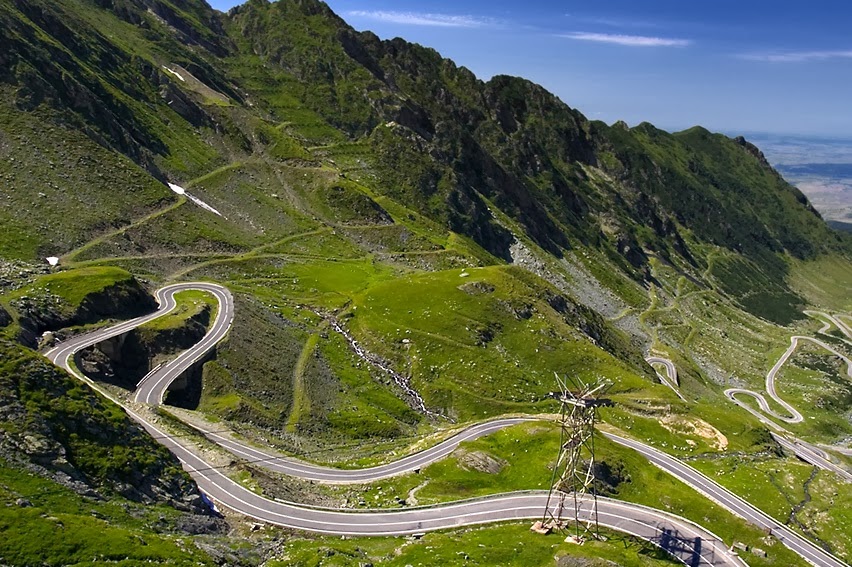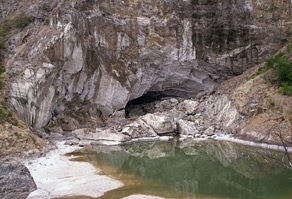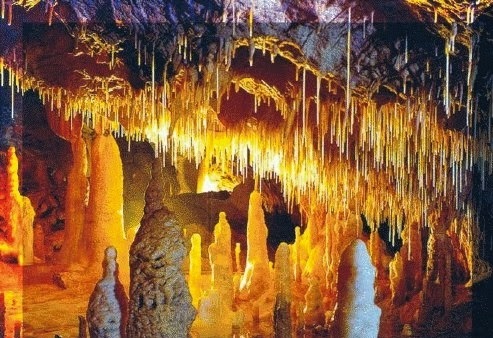Paths
followed in Romania
Transfagarasan
route
Transfagarasan
route stretches over a length of almost 90 km on two lanes. Suitable for
traveling over its direction with the car is from south to north, due to the
steep northern slope of the Fagaras Mountains. The route is particularly due
landscapes encountered many dangerous curves, big differences of level, cliffs
and steep ravines and waterfalls.
The
landscape is very beautiful and wild while having acelais cliff side on an area
of 9 km. Because the route is located in the tallest of the country, it can
be crossed only in summer.


Transfagarasan
make connection between Muntenia and Transylvania that also connect Sibiu and
Arges county.
The
route presents a great attraction for tourists due to the fascinating landscape
created by glacial landscape. Here we meet Vidraru lakes, The Goat, cottages,
resort and cable "Cumpana Balea" waterfall and Lake Balea.
Transfagarasan
begins Arefu common in Arges county, at kilometer 61 of DN7C and ends in the
village Cartisoara (Sibiu), at the junction with DN1. It has about 90
kilometers long and two lanes. It's an uphill road with many switchbacks.
It
has more tunnels and viaducts at "Balea Lake" passes through the
longest road tunnel in Romania (887 m) Balea Tunnel. In the tunnel there is
only one lane that has 6 meters wide and one meter wide sidewalk. The tunnel is
artificial lighting. Road traffic is closed from late October until June
because of snowy road. During the winter transfer from "Balea
Waterfall" to "Balea Lake" can be done with cable over a distance
of 3800 m.
"Capra-Balea
Lake" road tunnel crosses mount Paltinul between 2,025 and 2,042 meters
shares. With a length of 887 meters, is the longest road tunnel in Romania and
the tallest building designed to transport the car in Romania. Gallery has four
and a half meters, and flow is for a single lane in both directions. The tunnel
is not lit and has natural ventilation. "Balea" glacial lake formed
in a cirque and lies between Olt Defile and "Piatra Craiului".
Located at 2,000 meters, the lake has an area of over 360 square meters, and
the deepest place reaching 11 meters. In 1932 the entire surface of the lake
and about 200 acres around it were declared scientific reserve. Nearby was
built, in 2006, the first ice hotel in Eastern Europe.
Balea
Waterfall, located at 1,200 meters altitude, is one of the most popular in
Romania. Water flows over rocks from a height of 68 meters and thrill lovers
can ski down right next winter waterfall. In summer you can get here by car,
and after the road closes on November 1, visitors can ascend by cable car from
the chalet Balea Cascada.

Lake
Vidraru, with a height of 166 m and a length of 307 m, stretches for a distance
of about 10 km in the form of a circular arc, an important element in the
landscape of the Transfagarasan. Construction on the Arges River ended in 1966,
ranking it at the time one of the largest dams in Europe and the world. Lately
appeared more and more hostels and cabins around the lake, some of the
recreational opportunities to attract tourists.

Winter
Hiking in the valley Secu
Secu
Valley is a place that every year attracts increasingly more tourists. Gorgeous
scenery and the large number of monasteries built in this area make a dedicated
Secu valley hiking and outdoors. Views of the natural landscape is very
beautiful and can be enjoyed in peace away from the noise of the city.
A
special route for hikers is the way the thread Secu a road about 4 km uphill
slowly, along the cliffs and old forests that leads to Secu Monastery first
place where you can make a stop and you can warm up time you visit the place of
worship. From here, the road heading south through sandstone cliffs and alder
bushes until the valley becomes narrower and lonely. After another 3 km
traversed the forest environment and Secu appears in all its beauty, serene and
solitary Hermitage Monastery. Here, in the shade of old trees laden with snow
and monastery cemetery is the final resting place of the Fathers Cleopas Ilie,
Olaru and Ioanichie Paisie Balan. In addition to Cloister start two roads
leading to the three hermitages in the woods: Hermitage "Holy Cross"
and Hermitage Sihla Daniil the Hermit.

Saltworks
"Slanic" Prahova

Known
as being the largest salt mine in Europe, the resort Slanic is today one of the
most important spas in Romania, located between the Prahova valleys
Teleajenului, about 44 km from Ploiesti and at an altitude of 400 m.
Salt
Mountain unique in the world, „Bride’s Cave”, „Green Bath”,” Shepherd's Bath”
and „Salt Union” are just some of the
attractions of the resort which, according to the documents, more than 300 years
was an important mining of salt.
As
natural factors of treatment should remember the old salt mine (Union),
transformed into a sanatorium, to a depth of 210 m, for the treatment of
pulmonary diseases in a microclimate of salt air, able to make hot mineral
water baths in tubs, cold baths in the lake, hot mud applications for
gynecological treatments and electrotherapy; springs mineral water (with
calcium compounds, chlorine, sodium, sulfur) and „Shepherd’s Bath”,”Red Bath”,”
Pigs Bath”, „Green Bath” with high concentration the salt used in the treatment
of rheumatic diseases. The possibilities of accommodation are multiple from spa resort places to villas, hostels and
housing in private homes.

„Bride’s
Cave”
The
onlyin in the country and Europe by size
the saltworks consists 14 rooms,
trapezoid shaped, with an opening at the base of 32 meters, the tray 10 meters
and a height of 45 meters. The total area is 78,000 square meters and excavated
area is 2.9 million cubic meters of salt.
Access
to the mine is done with two elevators that carries visitors between
underground and surface vertically. Elevation difference is 208 meters and the
road is covered with lift in about 3 minutes. Ventilation: is naturally, the
temperature of 12 degrees Celsius is constant throughout the year and the
composition of air in the mine is rich in sodium ions and prophylactic improved
effects in the whole range deficiencies and respiratory diseases. The
sanatorium from here has 50 seats and a treatment for two weeks is sufficient
for patients with lung problems. Also, mine are arranged playgrounds, a sports
field, a room with pool tables and a buffet.
Tourists
can admire the statues of Decebal and Traian carved in salt by artist Justin
Nastase.


Bears
Cave

Known
as one of the spectacular touristic objectives of Apuseni Mountains, Bears Cave
lies in the vicinity of the location called Chiscau, in Pietroasa Commune,
Bihor District, at an altitude of 482 meters.
The
name of the cave is due to the numerous bear fossils, which were found there,
so therefore it represented a favorable place for shelter for the animals that
used to live there 15000 years ago. Owing to the falling of a huge rock, the
mouth of the cave was blocked and more than 140 bears were trapped inside.
Being hungry, the bears attacked one another until they all died.

The
cave was discovered in 1975 during the limestone exploitation works in the
quarry from Chiscau. Until 17th September 1975 the cave was closed and in this
time the subterranean pit was artificially opened through the dynamiting of the
entrance gate.
The
first man who went down the open pit was the miner Traian Curte from the same
location. The way that he covered was from the access gallery to the Great
Hall. At 20th September 1975, a group of amateur speleologists called
"Speodora” accomplished the first exploitation of the cave and five years later
the cave entered the touristic circuit of the country, being considered the
first subterranean cavity arranged after the level of the world technique.

At
the entrance of the cave, one may see a pavilion which consists of a waiting
hall, a booking office, a speleological museum and a counter with artisan
items. Being more than 1500m long, the cave presents galleries situated on two
levels: the upper gallery is 488 meters long and is intended to tourists and
the lower gallery (521m in length) is destined to the scientific research.
In
this cave there are three galleries and four halls: The Candles Hall, The
Spaghetti Hall, Emil Racovita Hall and The Bones Hall.
One
may visit this cave starting from The Bears Gallery (called The Bones Gallery
as well), where 1500 items, 140 skulls and numerous shelters for the cave bear
can be seen. On the walls of the gallery, one may notice scratches left by the
paws of the bears.

In
the second gallery, called Emil Racovita, one may see a bear skeleton exposed
just in the position the bear died and besides that, the fossils of other
animals which disappeared hundreds of years ago: a black goat species, the cave
lion and cave hyena. The distance between the walls of the cave is somewhere
between 10-15 meters and its vault is at 10 meters height, being adorned with
numerous stalagmites, domes, water basins and stalactites.
Bears
Cave
Lights
Gallery – Bears Cave.
The
last gallery, The Lights Gallery, welcomes us with its exciting stalagmites and
stalactites which created some true statuettes ("The Mastodon”, "The Curtains
from The Bears Gallery”, "The Portal”, "The Pagodas”, "The Lake With White
Lilies”), statuettes that look familiar to the ones of wax, revealing a pure
white that gives freedom to any visitor’s imagination. The gallery ends with a
16 meters long artificial tunnel, which is less accessible to the tourists, but
it finally leads the way to surface.






